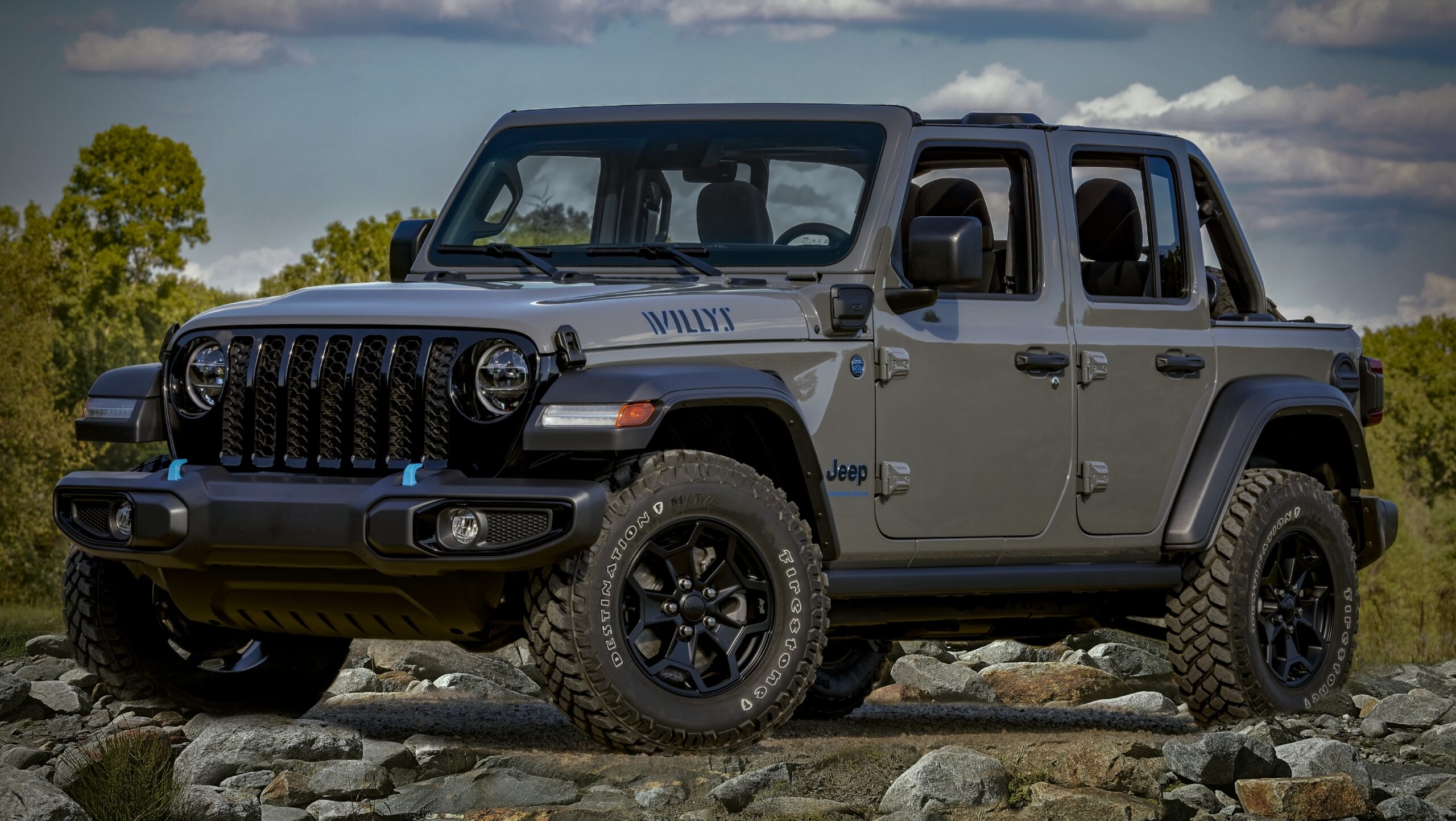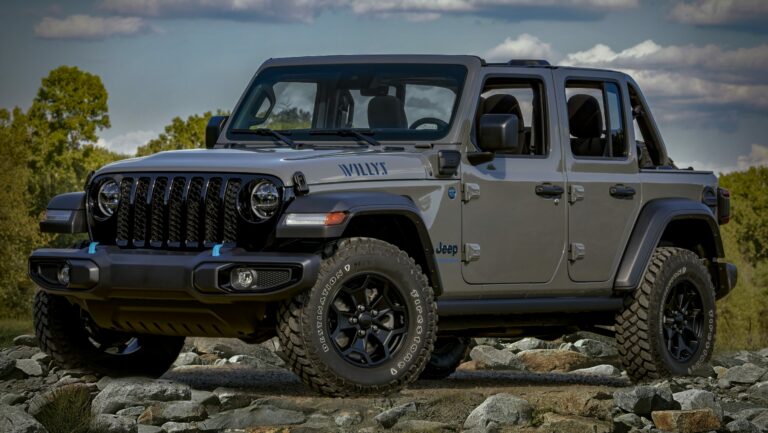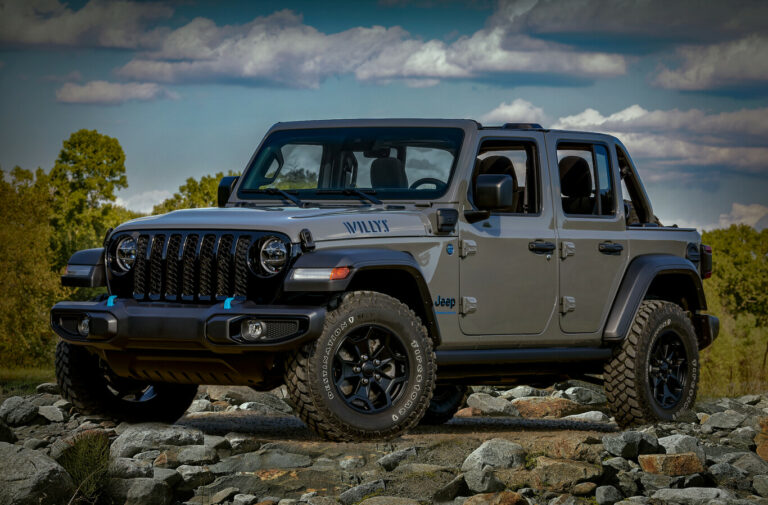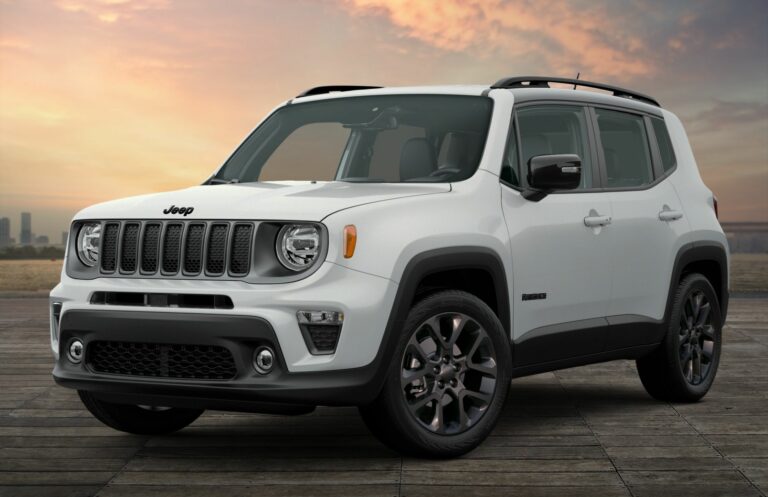Jeep Wrangler 2 Door Gas Tank Size: Your Ultimate Guide to Fueling Adventure
Jeep Wrangler 2 Door Gas Tank Size: Your Ultimate Guide to Fueling Adventure jeeps.truckstrend.com
The iconic Jeep Wrangler, particularly its nimble 2-door variant, embodies freedom, adventure, and an unparalleled connection to the open road – or the trail less traveled. For every intrepid explorer or daily commuter, one crucial detail often overlooked until it’s critically needed is the gas tank size. Understanding your Jeep Wrangler 2-door’s fuel capacity isn’t just about knowing how much money you’ll spend at the pump; it’s fundamental to planning your adventures, managing your range, and ensuring you never find yourself stranded in the wilderness or on a long highway stretch.
This comprehensive guide will delve into everything you need to know about the Jeep Wrangler 2-door gas tank size, from specific capacities across different generations to practical tips for maximizing your range and navigating potential challenges. Whether you’re a seasoned Jeeper or considering your first two-door Wrangler, this article will equip you with the knowledge to make informed decisions about your fuel and your journeys.
Jeep Wrangler 2 Door Gas Tank Size: Your Ultimate Guide to Fueling Adventure
Understanding the Basics: What’s in a Tank?
At its core, a gas tank’s size dictates how much fuel your vehicle can hold, directly influencing its maximum driving range. For a vehicle like the Jeep Wrangler, known for its off-road prowess and go-anywhere attitude, range is paramount. A larger tank means fewer stops, especially beneficial when exploring remote areas where gas stations are scarce. Conversely, a smaller tank, while potentially saving on initial fill-up costs, demands more frequent refueling and careful trip planning.
The 2-door Jeep Wrangler, due to its shorter wheelbase and overall compact design compared to its 4-door counterpart, typically features a slightly smaller fuel tank. This design choice contributes to its legendary maneuverability and lighter curb weight, but it’s a factor every owner must consider. The capacity has also evolved over the different generations of the Wrangler, each bringing subtle changes in design, engine efficiency, and, consequently, tank size.
Jeep Wrangler 2-Door Gas Tank Sizes by Generation
The Jeep Wrangler 2-door has seen several iterations, each with its unique characteristics and, importantly, a distinct fuel tank capacity. Knowing your specific model’s generation is the first step to understanding its fuel range potential.
Jeep Wrangler YJ (1987-1995)

The YJ, easily identifiable by its square headlights, was the first Wrangler to replace the venerable CJ.
- Standard Gas Tank Size: The YJ models typically came with a 15-gallon (approximately 56.8 liters) fuel tank.
- Range Consideration: Given its older engine technology and generally lower fuel efficiency compared to modern Jeeps, a 15-gallon tank on a YJ provides a more limited range, necessitating careful planning for longer trips.

Jeep Wrangler TJ (1997-2006)
The TJ brought back the classic round headlights and introduced coil-spring suspension for a more comfortable ride.
- Standard Gas Tank Size: Most TJ models were equipped with a 19-gallon (approximately 71.9 liters) fuel tank. Some very early models (1997) might have carried over the 15-gallon tank from the YJ, but 19 gallons became the standard for the vast majority of its production run.
- Range Consideration: The increased capacity over the YJ, combined with slightly improved engine efficiency, offered a more practical range for both daily driving and light off-roading.

Jeep Wrangler JK (2007-2018)
The JK generation marked a significant redesign, offering more interior space, modern features, and improved on-road manners.
- Standard Gas Tank Size: The 2-door JK models feature an 18.6-gallon (approximately 70.4 liters) fuel tank.
- Range Consideration: Despite being slightly smaller than the TJ’s tank, the JK’s more efficient engines (especially the 3.6L Pentastar V6 introduced in 2012) often translate to a comparable or even better effective range than older generations.
Jeep Wrangler JL (2018-Present)
The current JL generation refines the Wrangler experience with lighter materials, more engine options (including mild-hybrid and plug-in hybrid powertrains, though the latter is primarily for the 4-door 4xe), and advanced technology.
- Standard Gas Tank Size: The 2-door JL Wrangler is equipped with a 17.5-gallon (approximately 66.2 liters) fuel tank.
- Range Consideration: While the tank size is slightly smaller than the JK, the JL benefits from even more efficient powertrain options, including the 2.0L turbocharged engine and the updated 3.6L Pentastar V6 with eTorque, which can often deliver a superior effective range in real-world driving.
Factors Influencing Effective Range (Beyond Tank Size)
While the raw capacity of your gas tank is the starting point, several other critical factors dictate how far your 2-door Wrangler can truly go on a single fill-up.
- Fuel Efficiency (MPG): This is arguably the most significant variable. Engine type (e.g., 2.0L turbo vs. 3.6L V6), transmission (manual vs. automatic), and axle gearing all play a role. Your driving habits (city vs. highway) also dramatically affect MPG. Off-roading, especially in low range, can drastically reduce efficiency to single digits.
- Driving Conditions: Highway cruising typically yields the best MPG. City driving with frequent stops and starts consumes more fuel. Steep inclines, heavy winds, and extreme temperatures can also decrease efficiency.
- Vehicle Modifications: One of the most common reasons for reduced range in a Wrangler is aftermarket modifications. Lift kits, larger and heavier tires (especially aggressive mud-terrains), heavy steel bumpers, winches, roof racks, and additional gear all add weight and increase aerodynamic drag, significantly impacting fuel economy.
- Driving Style: Aggressive acceleration, hard braking, and high speeds burn more fuel than smooth, consistent driving. Maintaining a steady speed and anticipating traffic can save a surprising amount of gas.
- Vehicle Maintenance: A well-maintained engine, properly inflated tires, clean air filters, and regular tune-ups ensure your Wrangler operates at its peak efficiency.
Maximizing Your Range: Practical Tips
Even with a relatively modest tank size, you can significantly extend your 2-door Wrangler’s effective range with smart strategies:
- Drive Conservatively: Smooth acceleration and deceleration, maintaining the speed limit, and using cruise control on highways are simple yet effective ways to save fuel.
- Maintain Your Vehicle: Regular oil changes, tire rotations, proper tire pressure, and keeping your air filter clean contribute directly to better fuel economy.
- Plan Your Routes: Utilize navigation apps to find the most fuel-efficient routes, avoid heavy traffic, and identify gas stations along your journey, especially when heading into remote areas.
- Consider Auxiliary Fuel Solutions: For serious off-road adventures or extended trips where fuel is scarce, investing in quality Jerry cans (extra fuel containers) is a wise decision. Ensure they are securely mounted and properly stored.
- Remove Unnecessary Weight: Before a long trip or off-road excursion, remove any heavy items from your Jeep that you don’t need. Every extra pound reduces efficiency.
- Aerodynamics Matter: While the Wrangler isn’t known for its aerodynamic design, removing roof racks or light bars when not in use can slightly reduce drag and improve fuel economy.
Common Challenges and Solutions Related to Fuel
- "Range Anxiety": The fear of running out of fuel, especially prevalent when off-roading or on long, desolate stretches.
- Solution: Always know your vehicle’s approximate range based on your current MPG. When in doubt, carry extra fuel in approved containers.
- Impact of Modifications: Aftermarket parts often look great but can severely cut into your range.
- Solution: Be aware of the trade-offs. If you plan heavy modifications, factor in the need for more frequent refueling or consider auxiliary fuel solutions from the outset.
- Fuel Gauge Accuracy: Jeep fuel gauges are generally reliable, but like any vehicle, the "empty" mark often leaves a few gallons in reserve. Don’t push it too far, especially in challenging terrain where the fuel sloshing can affect readings.
- Solution: Reset your trip odometer with each fill-up and track your miles to empty, rather than relying solely on the gauge.
Upgrading or Modifying Your Fuel System
For some Wrangler owners, the standard tank size simply isn’t enough. Aftermarket solutions exist to address this:
- Aftermarket Larger Fuel Tanks: Several companies offer larger replacement fuel tanks that fit into the factory location, providing significant increases in capacity (e.g., 25-30 gallons).
- Pros: Greatly extended range, less frequent fill-ups.
- Cons: Significant upfront cost, increased vehicle weight, potentially more complex installation, and reduced ground clearance if not designed properly.
- Skid Plates: While not increasing capacity, upgrading your fuel tank skid plate is a crucial modification for serious off-roaders. The factory skid plate can be vulnerable to impacts, and a stronger aftermarket one protects your vital fuel source.
Jeep Wrangler 2 Door Gas Tank Size: Information & Estimated Costs
The following table provides a comprehensive overview of the standard gas tank sizes for different 2-door Jeep Wrangler generations, along with estimated costs for replacement OEM tanks and the general availability and cost range for aftermarket larger tanks. Please note that prices are estimates and can vary significantly based on supplier, condition (new/used), installation complexity, and market fluctuations.
| Jeep Wrangler Generation | Years Produced | Standard Gas Tank Size (US Gallons / Liters) | Approximate OEM Replacement Tank Cost (Estimated)* | Aftermarket Larger Tank Options (Availability & Estimated Cost)** |
|---|---|---|---|---|
| YJ | 1987-1995 | 15 Gallons / 56.8 Liters | $300 – $600 | Limited availability; some custom fabrication or specialized tanks may exist ($800 – $1500+) |
| TJ | 1997-2006 | 19 Gallons / 71.9 Liters | $400 – $700 | Moderate availability; typically 24-25 gallon options ($900 – $1800) |
| JK | 2007-2018 | 18.6 Gallons / 70.4 Liters | $500 – $800 | Good availability; typically 25-30 gallon options ($1000 – $2500) |
| JL | 2018-Present | 17.5 Gallons / 66.2 Liters | $600 – $900 | Growing availability; typically 25-30 gallon options ($1200 – $3000) |
- Estimated OEM Replacement Tank Cost: Refers to the cost of a new, direct-fit replacement fuel tank from a dealership or aftermarket parts supplier. This does not include installation labor.
- Aftermarket Larger Tank Options: Refers to aftermarket tanks designed to replace the factory tank with a higher capacity. Availability can vary, and costs are generally higher due to specialized manufacturing and increased capacity. Installation costs are typically separate and can be significant.
Frequently Asked Questions (FAQ)
Q1: What is the smallest and largest standard gas tank size for a 2-door Jeep Wrangler?
A1: The smallest standard tank is 15 gallons (YJ generation), and the largest is 19 gallons (TJ generation).
Q2: Is the 2-door Wrangler gas tank different from the 4-door Wrangler gas tank?
A2: Yes, typically. The 4-door Wrangler models (JK and JL) usually have larger fuel tanks (e.g., 22.5 gallons for the JK 4-door, 21.5 gallons for the JL 4-door) compared to their 2-door counterparts to accommodate their increased weight and provide a comparable range.
Q3: How far can a 2-door Jeep Wrangler go on a full tank?
A3: This varies greatly depending on the generation, engine, and driving conditions.
- A YJ (15 gal) with 15 MPG might go 225 miles.
- A TJ (19 gal) with 16 MPG might go 304 miles.
- A JK (18.6 gal) with 17 MPG might go 316 miles.
- A JL (17.5 gal) with 20 MPG might go 350 miles.
These are highway estimates; city driving or off-roading will significantly reduce these figures.
Q4: Can I install a larger gas tank in my 2-door Wrangler?
A4: Yes, aftermarket larger fuel tanks are available for most JK and JL 2-door models, and sometimes for TJ models. These tanks replace the factory unit and offer increased capacity. Be aware of the cost, installation complexity, and potential impact on ground clearance.
Q5: What kind of fuel should I use in my 2-door Jeep Wrangler?
A5: Most Jeep Wrangler 2-door models are designed to run on regular unleaded gasoline (87 octane). Always check your owner’s manual for the specific fuel requirements for your model year and engine. Some newer turbocharged engines might recommend or benefit from higher octane fuel, but it’s rarely mandatory for daily driving.
Q6: How accurate is the fuel gauge on a Jeep Wrangler?
A6: Jeep fuel gauges are generally reliable, but like all vehicles, they can sometimes be inconsistent, especially when off-roading due to fuel sloshing. It’s always best practice to track your mileage using the trip odometer and plan your fuel stops accordingly, especially on long trips or in remote areas. The "empty" light usually comes on with a few gallons still in reserve.
Conclusion
Understanding the gas tank size of your Jeep Wrangler 2-door is more than just a technical specification; it’s a key piece of information that empowers you to plan more effectively, drive more confidently, and truly enjoy the freedom your Wrangler offers. From the classic YJ to the modern JL, each generation has its unique fuel capacity, which, when combined with your driving habits and vehicle modifications, dictates your real-world range.
By knowing your specific tank size, monitoring your fuel efficiency, and implementing practical tips for maximizing your range, you can minimize range anxiety and maximize your adventures. Whether you’re tackling challenging trails or cruising down the highway, being fuel-aware ensures that your 2-door Jeep Wrangler remains the ultimate companion for every journey.







